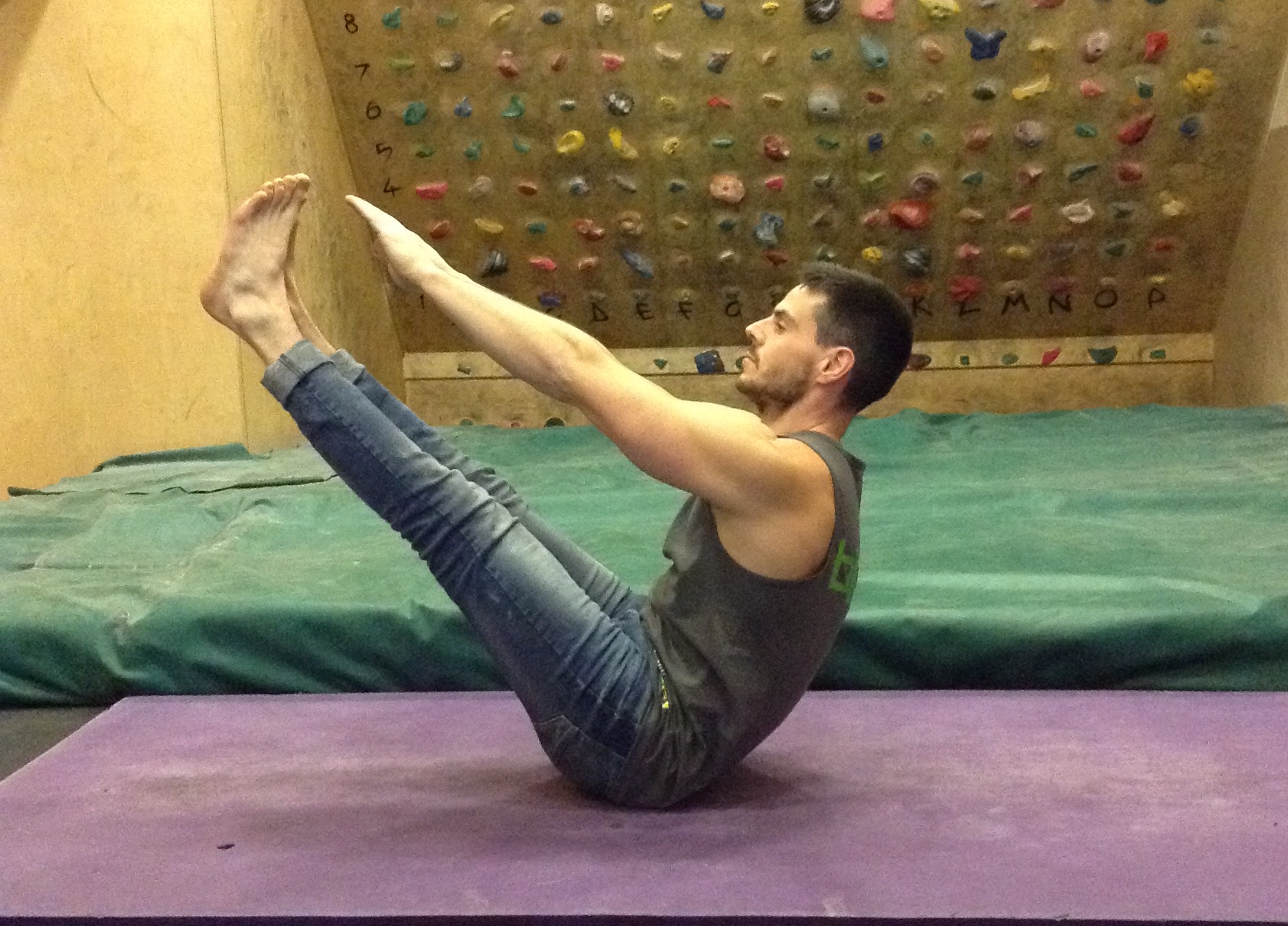The definition of core stability is
the ability to maintain correct alignment of the spine, shoulder girdle and pelvic girdle whilst moving
As climbers, we train hard on finger boards, campus boards, and pull-up bars, but regularly neglect the most important weapon in our route crushing arsenal: our core.
It is an understatement to say that no matter what type of route or style you are climbing, core stability and strength is essential, and by training it effectively your progression through the grades is almost guaranteed. Core training has improved by leaps and bounds in recent years, and the understanding of its fundamental importance has become common knowledge. But having a washboard stomach does not necessarily mean that your core is any stronger than the next guys or girls. I find all too often when training climbers that they have the misconception that a six pack or eight pack is the sole sign of a strong core. A strong core is the foundation of all bodily movements, and the stronger the core the more efficient and powerful the body becomes, the risk of injury is reduced, and balance is increased.
Related: Strength or Power? Improving Your Climbing with Plyometrics Training
Climbing involves a combination of complex movements in all 3 planes of motion:
- Frontal: Side flexion; exercise example: side-lying lateral crunches
- Sagittal: Flexion, extension; exercise example: crunches, back extensions
- Transverse: Rotation; exercise example: oblique reach
Training the core in these 3 planes encourages a balanced core, and understanding what makes up the core is essential to devising a training plan that will let you see results.
The core muscles are made up of local and global muscles. Global being the visible bad boy muscles, like rectus abdominis and erector spinae, they are responsible for powerful trunk movements and are also known as mobilizer muscles. The local muscles are deep stabilizing muscles that lie close to the vertebral column, and are responsible for controlling the alignment between adjacent vertebrae. Both the global and local muscles need to be trained to achieve complete core strength.
Across a series of articles, released once a week, I will divulge my ten must-do core exercises for climbers. Each will be specific to climbing and offer a progression for crushers who are seeking an additional core challenge.
There are no bad core exercises. There’s bad technique, but no bad exercises. Some are more effective than others, and some are more specific to your sport, but any training of the core in any way can only be positive. I have put together ten exercises that can help build a strong core. Each exercise varies in difficulty and can be progressed to get more from the movement. Although not immediately apparent, each of these exercises is specific to climbing.
The plank
I’m starting with this must-do exercise. It may seem simple, but the plank is fundamental in strengthening the core in the isometric phase. In terms of climbing, mastering the plank increases body tension, which is especially important for those overhangs.
1. Lie face down resting on your forearms, engage your core and glutes, and raise your body from the floor supporting your weight on your forearms and toes.

2. Maintain a straight line through your core and legs, and hold the position keeping the glutes tensed.

The easiest way to progress the difficulty of a plank is to simply remove one point of contact from the floor; such as a foot or a hand. By doing this the demand on the core stability is increased.

Related: Climbing-Specific Strength Training Gym Workout
V-ups
Also known as a pike, this exercise demands control and excellent form; practice makes perfect. Unlike the plank, the V-up targets the large mobilizing muscles, like rectus abdominis and transverse abdominis, and is performed in the sagittal plane of movement.
1. Lay on your back with your arms stretched out above your head.

2. Engaging your core, raise your feet and upper body off the floor with your legs straight, and arc your hands over to meet your feet.

3. Hold the position and then slowly and with control, return to your starting position and repeat.

To make this exercise more challenging, increase the resistance in the form of weight either to the feet or hands.

Related: Climbing Training: Core Stability & Strength, Part 2









